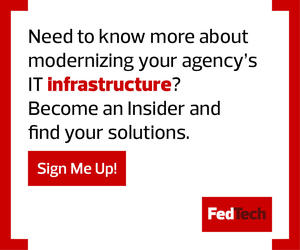Within the federal IT community, the National Institute of Standards and Technology is well known for its cybersecurity standards, which play a major role in federal agencies’ IT security posture. However, NIST does a lot more than come up with cybersecurity frameworks.
The agency, which has existed since 1901, is also famous for its research laboratories, which conduct cutting edge research into communications technology, semiconductors, engineering and more. There are few that have had more of a direct impact on Americans’ lives than NIST’s National Fire Research Laboratory, dedicated to understanding the behavior of fire and how it impacts structures.
Research conducted by the fire lab has led to the development of less flammable cigarettes, improved fire exits in offices, better smoke detectors and more home sprinkler use.
“A lot of the work that’s been done historically, people would notice just about everywhere they look,” says Matt Bundy, director of operations at the fire lab. “There is a barrier fabric in mattresses, and they comply to a federal regulation, a standard that developed in our laboratory, that if an external flame is applied to the mattress, the flame does not propagate and grow.”
Since that regulation was put into effect in 2007, over a thousand lives have been saved, according to Bundy.
Click the banner below to watch a video about NIST’s fire research lab.

How NIST Uses Tech to Research Fire
Although the dynamics and physics of fire have been well understood for more than a century, the NIST fire lab focuses on performing research needed to develop new standards, improve safety codes and enhance understanding of fire, Bundy says.
The fire lab’s facility, located on the NIST campus in Gaithersburg, Md., opened in 1974 and was remodeled in 2015 to add structural fire testing capabilities. NIST uses the lab to create, take down and reconfigure experimental setups.
Artur Chernovsky, an electronics engineer with NIST who works in the fire lab, notes that the lab’s configurations are constantly changing. “You need to keep in mind that you will always be adding new technology later,” he says.
The experiments range from simulating a fire that starts on a stovetop up to simulating multiroom and multistory fires.
A lot of the work that’s been done historically, people would notice just about everywhere they look.”
Matt Bundy
Director of Operations, National Fire Research Laboratory, NIST
Bundy says the lab likes to use commercial, off-the-shelf technology as much as possible because it “just makes life a lot easier for us.” However, the lab often needs to design and build customized pieces of equipment, including housings, water cooling and shielding and other elements that allow the lab to place 360-degree cameras nearby and keep them safe from the fires.
Chernovsky notes that the revolution in video capture, from film to digital video formats, has helped the lab immensely. Bundy adds that the lab uses IP-based cameras, automation and servers to store all of the fire footage the cameras capture.
The lab has “tens of terabytes of storage that are actively managed and are really integral to our data collection systems,” Bundy says. The lab has three dedicated servers with mostly off-the-shelf, network-attached devices, according to Chernovsky.
Over the past year, Chernovsky invested significant energy to develop the lab’s new video data acquisition systems, which will enable the use of mobile devices such as iPhones and iPads to monitor testing environments.
Click the banner below to get access to a customized federal IT content experience.


NIST’s Fire Lab Has Real-World Impact
NIST’s fire investigations have had real-world impacts. For example, its research into the collapse of the World Trade Center “resulted in more than 40 major and far-reaching changes to U.S. building and fire safety codes to improve the safety of buildings, their occupants and emergency responders,” according to a NIST blog post.
“Different needs arise as technology evolves,” Bundy says. “There are oftentimes new fire problems that come along with that.”
“We want our research to be broad and generally applicable,” he adds. “But we do have cases where there is a need for a federal investigation of a fire, and NIST will be involved with those.” Examples of this include the 2003 fire at The Station nightclub in Rhode Island, and the Camp Fire, which devastated the town of Paradise, Calif., in 2018.
The Camp Fire investigation, for example, helped reconstruct the timeline for the fire. “The information we collected on the timeline is extremely powerful by itself, not only for Paradise but for other similar communities, to help them understand what they may encounter and better prepare, whether it is at a community or at the first responder level,” Alexander Maranghides, a NIST fire protection engineer who led the timeline reconstruction, says in a blog post.
“We ask the question, ‘What is the impact to society?” Bundy says. “That’s one of the metrics we use. A lot of our researchers are passionate about having impact. I think that we do. To me, it’s very exciting to see when there are changes to the real world.”
READ MORE: NIST has worked to develop cross-government blockchain solutions.
Earl Zubkoff, Photo courtesy of NIST













